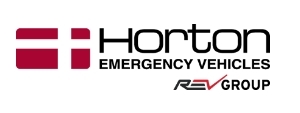Award winning mobile solution for EMS responders
Company Profile
Headquartered in Grove City, Ohio, Horton Emergency Vehicles is the leading manufacturer of custom-built ambulances. Since 1968, they have grown to a network of 16 dealers and have become a premier ambulance manufacturer, building the world’s safest ambulances as verified by extensive testing. Horton’s commitment to quality extends to the technology built into their vehicles. In an emergency situation, seconds can cost lives. Horton’s vehicles are equipped with a technological tool set that allows first responders to focus on the patient rather than the equipment.
Business Situation
In an EMS rescue situation, personnel rely on the ambulance to perform flawlessly, carry the necessary equipment, and be simple to operate. In the past, that has been achieved by carefully designing the interior of the vehicle to provide the maximum ergonomic and usability features, but the best design in the world falls short once the personnel leave the vehicle to see to the needs of their patient.
Horton found that significant time was being lost by locking and unlocking the vehicle’s doors, turning on and off various exterior lights due to changing needs in nighttime rescue scenarios, having to monitor power to internal systems in long-running rescue efforts, etc. They saw a need to be able to portably monitor and control the ambulance’s resources from outside the vehicle itself, but that required the invention of new technology and a big paradigm shift. The view of the ambulance had to shift from being simply a customized motor vehicle, to being a controllable and programmable life support system.
Technical Situation
The technology for making that change simply didn’t exist, so Horton set out to design it. Partnering with Weldon Akron Brass for the hardware and Halcyon Solutions for the software, Horton proposed an electronic command-and-control internal network for the ambulance that could be accessed both internally via a centralized control panel and externally with a smart phone application. The system would have to be both reliable and secure, and provide real-time messaging that kept the EMS personnel outside the vehicle up to date with the state of the systems inside the vehicle.
Solution
Weldon already provided an internally networked system for control of ambient systems such as internal and external lighting, door locks, oxygen flow, etc. but it was a closed system with proprietary messaging that was never intended for extension outside the confines of the ambulance.
Halcyon proposed a design, however, that merged a number of technologies, both standard and new to the market, to extend the system and allow it to be accessible via smartphone.
Weldon’s design is modular, with peer-to-peer electronic control units that integrate with vehicle systems to turn them on and off or get information about their state, and are programmable to prevent potentially dangerous combinations of activities to occur during a chaotic emergency situation. Halcyon proposed adding another module to the system – a miniature Wi-Fi hotspot that also contained a web server. The software within the web server could then capture the messages circling through the ambulance’s control network to provide status updates, as well as implement a standard web service to allow for commands to be sent and passed into the control network.
Halcyon was tasked with the overall end-to-end system design, including provisioning, security, communications, and most importantly, usability. Since Horton had an idea of the look they wanted for the phone application, Halcyon’s visual designers worked to take that basic form and make it suitable for use on various smartphone platforms. While user interface design was being worked, Halcyon’s technical staff collaborated with Weldon to design the application programming interface (API), finally turning it over to Weldon engineers to implement. Halcyon’s project design staff then began designing and building MobilEMS, the smartphone application that would be used to communicate with the ambulance’s network. To maximize its potential audience, MobilEMS is designed for Windows Mobile, iPhone and Android, and is portable to tablet form factors as well.
Security was a paramount concern from the beginning. To harden access to the system, Halcyon’s designers proposed the use of military-grade encryption and requiring that the vehicle’s Wi-Fi network have no access to the Internet. But since the ambulance systems would be configured at Horton’s plant prior to delivery, a mechanism had to be created for both authentication and authorization to each different vehicle, no matter where in the world it was stationed or when it was put into use. To overcome that issue, Halcyon’s Microsoft Practice group developed the Horton Command Center, a centralized web portal accessible via the smartphone. This web portal allowed both Horton and end user administrators to set up users, assign users to vehicles, and manage encryption certificates that ensured properly authenticated access to the ambulance systems.
Benefits
As of this writing, Horton is finalizing the construction of the first ambulances to house the new system. The anticipated benefits of a system that allows EMS personnel to monitor and control the features of their vehicle are enormous, and will above all save precious time that could mean the difference between life and death in a rescue situation.
During the development cycle, Horton asked if the system could be extended to provide the ambulance’s preventive maintenance data and store it in Command Center, which, with Halcyon’s flexible design of the system, became only a simple addition. Now fleet managers can at a glance, see which vehicles are or will soon be in need of service and proactively schedule maintenance. Horton anticipates that the cost savings from avoiding vehicle breakdowns will be an extremely compelling benefit of the system, not to mention the reduced risk of potentially serious vehicle problems occurring during a run.
In addition, the Halcyon data-driven design is open enough to support the control of new features as they are created and added to the vehicle option mix, without requiring major application overhaul. This “future-proofing” is a core tenet of Halcyon’s software design group, and is sure to pay dividends over the years to come.
Technologies Used
Development of the system was broken out into two units: Command Center and MobilEMS. The technologies used in their development were:
Command Center
Tools, Platforms and Frameworks
- Visual Studio 2013
- Microsoft Azure web hosting
Languages and libraries
- C#
- Microsoft .NET Framework v4.5
- Microsoft MVC web framework
- JavaScript
- jQuery
- Bootstrap
MobilEMS
Tools, Platforms and Frameworks
- Visual Studio 2013
- VSNomad
- Sharp Kit
- Phone Gap Build
Languages and libraries
- C#
- Microsoft .NET Framework v4.5
- JavaScript
- Cordova
- jQuery / jQueryMobile

